Change Language :
iglide® H - Material data
Materials table
General features
Unit
iglide® H
Test method
Density
g/cm³
1.71
Color
Gray
Max. moisture absorption at 73° F/50% R. H.
Wt.-%
< 0.1
DIN 53495
Max. moisture absorption
Wt.-%
0.3
Coefficient of surface friction, dynamic, against steel
µ
0.07 - 0.2
p x v value, max. (dry)
psi x fpm
39,000
Mechanical properties
Modulus of elasticity
psi
1,813,000
DIN 53457
Tensile strength at 68° F
psi
25,380
DIN 53452
Compressive strength
psi
11,750
Permissible static surface pressure (68° F)
psi
13,050
Shore D hardness
87
DIN 53505
Physical and thermal properties
Upper long-term application temperature
°F
392
Upper short-term application temperature
°F
464
Lower application temperature
°F
-40
Thermal conductivity
[W/m x K]
0.6
ASTM C 177
Coefficient of thermal expansion (at 73° F)
[K-1 x 10-5 ]
4
DIN 53752
Electrical properties
Specific forward resistance
Ωcm
< 10 5
DIN IEC 93
Surface resistance
Ω
< 10 2
DIN 53482
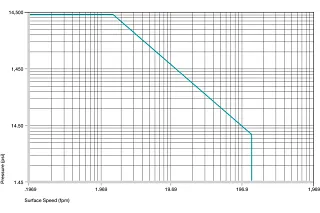
Permitted p x v values
For iglide® H plastic bushings with 0.039 inch wall thickness in dry operation against a steel shaft, at 68° F, installed in a steel housing.
iglide® H is a fiber-reinforced thermoplastic material especially developed for applications in high atmospheric humidity or under water. Plastic bushings made of iglide® H can be used completely free of lubrication; in application in the wet area, the surrounding media acts as additional lubricant.
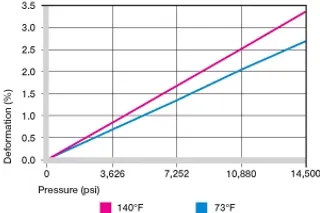
Figure 12.2: Deformation under load and temperatures
Surface pressure
Figure 12.2 shows the elastic deformation of iglide® H with radial loads. Under the maximum recommended surface pressure of 13,050 psi, the deformation amounts to about 2.5%.
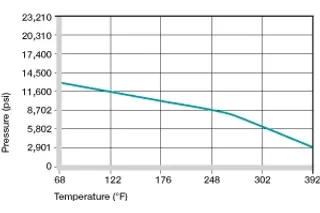
Figure 12.3: Maximum recommended surface pressure dependent on the temperature
Temperatures
iglide® H is an extremely temperature-resistant material. With a short-term permitted maximum temperature of 464° F, the iglide® H plastic bushings can be subjected, for example, to a paint drying process at low loads.
With increasing temperatures, the compressive strength of iglide® H plastic bushings decreases. Fig. 12.3 clarifies this connection. The temperatures prevailing in the bushing system also have an influence on the bushing wear. The wear rises with increasing temperatures. With increasing temperature in the range between room temperature and 302° F, compressive strength and wear, if only to a minor degree, drop for the iglide® H.
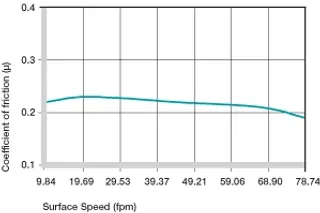
Figure 2.4: Coefficients of friction dependent on the surface speed, p = 108 psi
Friction and wear
Similar to wear resistance, the coefficient µ of friction also changes with the load. Notice that the coefficient of friction µ is slightly reduced with the increase in the surface speed, when the pressure stays the same.
Since the shaft material also has a large effect on the friction and wear, correct shaft selection is important for iglide® H. Shafts that are smoother than 4 rms increase the coefficient of friction. For applications with high loads, we recommend hardened and ground surfaces with an average roughness range of 12-16 rms.
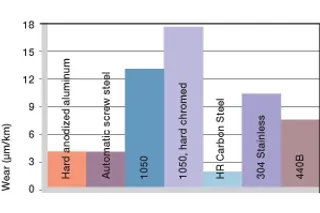
Fig. 2.7: Wear, rotating application with different shaft materials, load p = 108 psi, v = 98 fpm
Shaft materials
The graph displays a summary of the results of tests with different shaft materials conducted with plastic bushings made of iglide® H. The results clearly show that in rotating and oscillating applications the correct shaft selection is critical. For rotating applications, shafts made of 1050 hardened, ground steel and HR Carbon steel show the best wear values, the 3030 stainless steel shaft is best suited for oscillating movements. Also, hard chromed shafts with iglide® H plastic bushings are only recommended for low loads.
Please contact us in case the shaft material scheduled by you is not included in this diagram.



